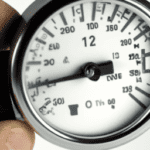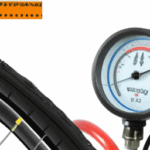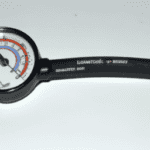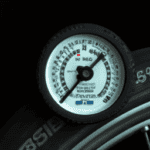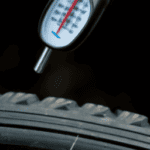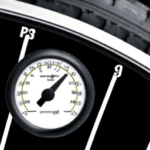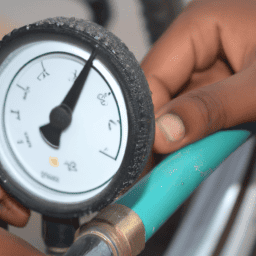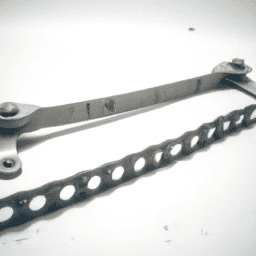As a passionate cyclist, there was an occasion where during an extensive ride, I experienced a sudden tire blowout. I found myself isolated, stuck with a flat tire, and completely clueless on how to repair it.
That experience taught me the importance of properly inflating my bike tires and ensuring that they are at the right pressure.
In this article, I will be discussing how much air is needed in bicycle tires. Tire pressure is a critical factor that affects the overall performance and safety of a bicycle.
Whether you are a casual rider, a professional cyclist, or just someone who enjoys a leisurely ride, it is essential to know the proper tire pressure and how to maintain it.
So, let’s dive in and explore the factors that affect tire pressure, the importance of proper inflation, and how to determine the correct tire pressure.
Key Takeaways
- Proper tire inflation is critical for performance and safety of a bicycle.
- Measuring tire pressure using a tire pressure gauge is the most accurate way, and checking regularly and before long rides is essential.
- The recommended pressure range can be found on the sidewall or in the owner’s manual, and overinflating can lead to a harsh ride and increased risk of punctures.
- Temperature fluctuations, tire material, altitude changes, and riding style can all affect tire pressure, and small differences can significantly impact handling and stability on the road.
Factors that Affect Tire Pressure
There’s a variety of factors that’ll impact how much air is in your bicycle tires. The first factor is temperature fluctuations, as air expands in heat and contracts in cold weather. If you pumped your tires in the morning, for example, and then rode in the afternoon when the temperature rose, the air molecules in your tires would expand and increase the pressure. On the other hand, if you pumped your tires in the afternoon and rode in the morning when the temperature dropped, the air molecules in your tires would contract and decrease the pressure. It’s important to keep this in mind to ensure your tires are properly inflated for optimal performance.
Another factor that impacts tire pressure is the tire material. Different tires use different materials, which can affect how much air they’ll need. For example, a tire made of a harder material will require more air pressure to achieve the same level of stiffness as a tire made of a softer material.
Altitude changes can also affect tire pressure, as the air pressure decreases with elevation. Finally, your riding style can also impact tire pressure. For instance, if you’re a heavier rider, you may need to pump your tires to a higher pressure to accommodate your weight.
It’s crucial to consider these factors when pumping your bicycle tires to ensure maximum performance and safety. With that said, let’s move on to the importance of proper tire inflation.
Importance of Proper Tire Inflation
Maintaining the correct pressure in your bike’s rubber can make all the difference in your ride. It not only ensures a comfortable and smooth journey but also improves the overall lifespan of the tires. Here are a few reasons why proper tire inflation is crucial:
-
Enhanced safety: The correct tire pressure ensures better traction and stability on the road, reducing the chances of accidents caused by skidding or slipping.
-
Better performance: Proper tire inflation optimizes your bike’s speed, acceleration, and braking, enhancing its overall performance and efficiency.
-
Cost-effective: Maintaining the right tire pressure helps you save money on fuel consumption and tire replacement costs in the long run.
Using a tire pressure gauge is the most accurate way to measure the pressure in your bike’s tires. Moreover, it’s vital to keep in mind that temperature changes significantly impact tire pressure. As the temperature rises, the air inside the tire expands, increasing the pressure, and vice versa.
Therefore, it’s essential to check your bike’s tire pressure regularly, especially before long rides and in extreme weather conditions.
In the next section, we’ll look at how to determine the correct tire pressure for your bike.
How to Determine the Correct Tire Pressure
Figuring out the right tire pressure for your bike can be a breeze if you follow these simple steps.
First, you need to check the recommended pressure range for your tires. This information is usually printed on the sidewall of the tire or can be found in the owner’s manual. Make sure to check the range and not just the maximum pressure as overinflating your tires can lead to a harsh ride and increased risk of punctures.
Next, use a pressure gauge to check the pressure in your tires. You can find a pressure gauge at any bike shop or online. Simply remove the valve cap, press the gauge onto the valve stem, and read the pressure.
If the pressure is below the recommended range, use a pump to add air until it reaches the desired level. Repeat this process for both tires.
With these simple steps, you can ensure that your bike tires are properly inflated, which will result in a smoother and safer ride.
Now, let’s move on to some tips for maintaining proper tire inflation.
Tips for Maintaining Proper Tire Inflation
To keep my bike ride smooth and safe, I make sure to regularly check and adjust tire pressure. This is because the importance of proper tire inflation can’t be overstated.
Studies have shown that even a small difference in tire pressure can significantly impact handling and stability on the road.
One common mistake I see people make when inflating their tires is relying on visual cues alone. It’s important to use a tire pressure gauge to get an accurate measurement of the pressure.
Another mistake is inflating the tires to the maximum pressure listed on the sidewall of the tire. This isn’t always the correct pressure for your specific bike and can lead to a harsh ride.
It’s important to consult the bike manufacturer’s recommended pressure range and adjust accordingly. By taking these steps and maintaining proper tire inflation, I can enjoy a safe and comfortable ride every time.
Frequently Asked Questions
How does the type of terrain I ride on affect my tire pressure needs?
When riding on different types of terrain, the impact on tire pressure needs to be considered. Adjusting the pressure based on the terrain can improve handling and decrease the risk of flats.
Can I use a different type of valve stem on my bike tires?
As the saying goes, "if it ain’t broke, don’t fix it."Using different valve stems on bike tires may cause compatibility issues and lead to air leaks or other problems. Stick with standard valves for reliable performance.
What is the best way to store my bike when not in use to maintain proper tire pressure?
To maintain proper tire pressure when storing my bike, I use appropriate storing techniques, such as hanging it by the wheels or using a bike stand. I also make sure to prevent moisture buildup by storing it in a dry place or using a bike cover.
Can I use a car tire pump to inflate my bike tires?
Pumping up bike tires with a car pump can be a quick fix in a pinch, but it has its drawbacks. The high pressure can blow out bike tires and the gauge may not accurately measure the pressure. Alternative methods include using a bike pump or visiting a bike shop.
What should I do if my tire pressure is consistently low even after inflating it to the recommended level?
If my tire pressure remains low despite inflating it to the recommended level, I would consider the impact of my tire material on consistency and the potential influence of weather conditions on tire pressure and maintenance. Technical and detailed analysis is necessary for resolution.
Conclusion
In conclusion, ensuring that your bicycle tires have the correct amount of air is crucial for optimal performance and safety. Failing to maintain proper tire inflation can result in a variety of issues, including decreased speed and control, increased risk of punctures, and uneven tire wear.
To determine the correct tire pressure, consult the manufacturer’s recommendations or use a tire pressure gauge. Remember to check your tire pressure regularly and adjust it as needed, especially before embarking on a long ride.
By taking these steps, you can ensure that your bicycle tires are always in top condition and ready to take you wherever your adventures may lead. As the saying goes, "a stitch in time saves nine."Similarly, taking the time to maintain proper tire pressure can prevent a host of problems down the road.
So don’t let a flat tire or sluggish ride hold you back – keep your bicycle tires properly inflated and enjoy a smooth, safe ride every time.


